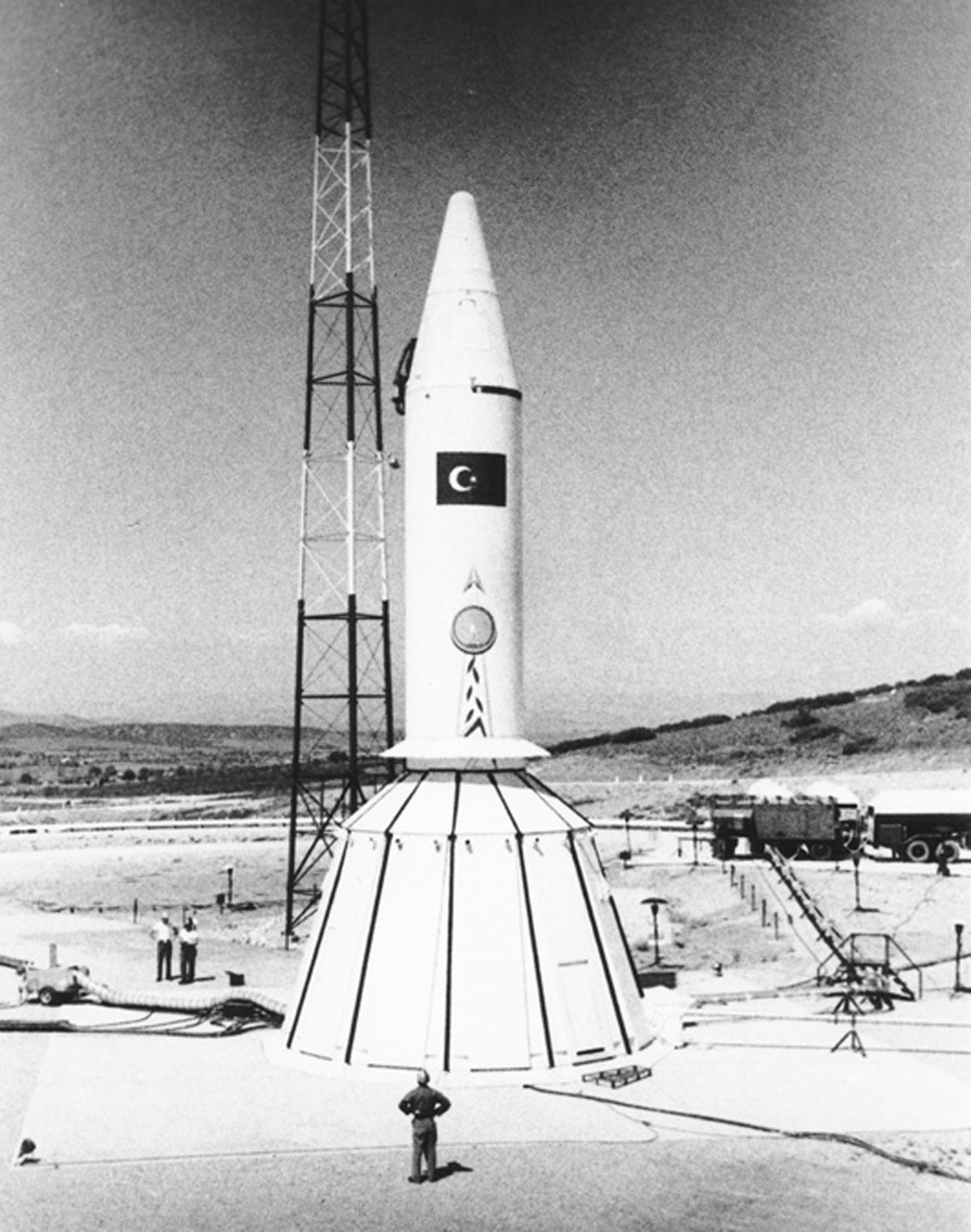Throughout history, the United States has seen itself through various wars and uncertain political and economic predicaments. One of those being The Cuban Missile Crisis which took place from October 16th – October 28th in 1962, almost leading to a destructive nuclear war. This month marks 61 years since the potential war took place between the U.S. and The Soviet Union backed by an alliance with Cuba. The events leading up to the crisis are quite complex and involve the distrust of the newly empowered Fidel Castro.
Let’s take a further look at what transpired before the crisis took place.
In 1959, Fidel Castro had risen to power after overthrowing Cuban Military Dictator Fulgencio Batista. Batista had also been a previous President of Cuba between 1940-1944 and ruled throughout the 1950s as a pro-American anti-communist military styled dictator. He was also considered brutal and corrupt by many due to his police-styled regime and became unfavorable to many within Cuba. Although losing favor with the Cuban public, Batista had strong ties to the U.S., including organized crime as he aided the American Mob in successfully running casinos throughout Havana. The United States also held a strong business relationship with Batista and Cuba during the time, and even aided the country with assistance such as weapons and had great financial ties to the country’s infrastructure including the sugar, banking, and mining industries. Despite a strong alliance with the U.S., Batista was eventually overthrown by Castro in the 1959 Cuban Revolution.
Castro had opposed Batista’s policies and backed a more nationalist approach to Cuba disregarding American influence which had upset the U.S. Government. During Castro’s power grab, the Eisenhower Administration distrusted him and sought to remove him from his position of power and recruited over 1000 Cuban exiles in Miami to help overthrow Castro and his regime. As Castro became closer to The Soviet Union, the United States stopped all importation of Cuban sugar. During this time, The Cold War was also present involving the Soviet countries and U.S., stemming from distrust and various geopolitical pressures and competition after World War II. Both countries were at odds with each other over world influence and superiority, including the “Space Race,” as the Soviet Union and U.S. both raced to become the first to launch into space and land on the moon. The U.S.S.R became the first to reach space in 1961, and the U.S. became the first and only country to send humans to the moon starting in 1969 with Neil Armstrong. To date, 12 American astronauts have walked the moon as a part of the Apollo program. Russia, China, Japan, and India have all reached the moon by via probes only (space devices).
As President John F. Kennedy took office in 1961, he was confronted with the secret mission started by the Eisenhower administration, who planned on invading Cuba with exiles in hopes of overthrowing Castro who had formed a strong alliance with the Soviets. The Cuban exiles had been trained by the CIA, and Kennedy had been hesitant with the plan but was reassured it would work.

In reality, the plan backfired, when the Cuban exiles left Guatemala for Cuba in American B-26 bombers in disguise. The trained exiles landed at the southern coast of Cuba known as the Bay of Pigs on April 17, 1961. The secret operation was greatly flawed as Castro was aware of the invasion and became successful in fighting back. Many of the exiles perished during the operation or were taken prisoner by Castro. The failed Bay of Pigs invasion set a precedent for the Cuban Missile Crisis the following year in October, another major challenge the new Kennedy Administration faced.
As the Soviet Union backed Cuba and vice versa, secret Soviet nuclear missiles were discovered by the American military in October of 1962 on Cuban soil only 90 miles from the Florida border, and capable of reaching Washington D.C in about 10 minutes. The missiles were in response to the U.S. planted “jupiter” missiles in Turkey and Italy, which the Soviets viewed as a power grab and threat along with the failed Bay of Pigs operation in Cuba the previous year. The U.S. missiles had been installed for U.S. security and allies for protection against potential Soviet threats. Eventually Castro and Soviet/Russian leader Nikita Khrushchev secretly agreed on planting the nuclear missiles which ultimately led to the Cuban Missile Crisis of 1962, a 13-day tense diplomatic crisis between the U.S. and the once U.S.S.R, ( Union of Soviet Socialist Republics). As news of the potential nuclear war made waves through the public, many people began to fear for their lives. The U.S. became terrified with fear and many families began to prep by stocking up on essentials such as canned food, toiletries, and even created backyard bomb shelters within the vicinity of their homes much to the President’s advice. Schools also held drills during the day and children practiced hiding under their desks in case of a bombing. Fright and distress loomed over the country and vice versa as the U.S.S.R knew the potential of nuclear bombs landing on their soil just as well.
The Kennedy Administration also enacted a naval blockade around Cuba, and came head-to-head with Soviet naval ships on October 24th. On October 27th, U.S An American military plane was also shot down during the 13-day crisis, and a task force of military personnel was on standby in Florida. What the world didn’t know (including U.S. Navy destroyers) was that a submarine led by 3 Soviet captains were armed with nuclear torpedoes capable of extreme destruction. This particular submarine was unable to communicate with their superiors due to a lost connection, therefore decisions were based on their own capabilities and in-the-moment decisiveness which almost led to a nuclear launch. The captains on the submarine were in view of U.S. naval forces who tried to bring the submarine to surface view. The Soviet captains apparently had been unaware of the U.S. naval blockade and came extremely close to launching their nuclear tipped torpedoes which would have changed history entirely.
The following is a reflection (The Fog of War Documentary) from Secretary of Defense Robert McNamara who was instrumental during the crisis.
“Kennedy was trying to keep us out of war. I was trying to help him keep us out of war. And General Curtis LeMay, whom I served under as a matter of fact in World War II, was saying ‘Let’s go in, let’s totally destroy Cuba”.
“On that critical Saturday, October 27th, we had two Khrushchev messages in front of us. One had come in Friday night and it had been dictated by a man who was either drunk or under tremendous stress. Basically, he said, ‘If you’ll guarantee you won’t invade Cuba, we’ll take the missiles out’. Then before we could respond we had a second message that had been dictated by a bunch of hardliners. And it said, in effect, ‘If you attack, we’re prepared to confront you with masses of military power.”
Shortly after this, both the Soviet Union and U.S. came to an agreement which prompted the removal of the nuclear missiles from Cuba, and a promise from the United States of never entering the country. The Soviet Union also pushed for the removal of U.S. missiles from Turkey which President Kennedy secretly agreed to. The 13-day crisis officially ended on October 28th, 1962.
Kennedy also utilized the help of brother U.S. Attorney General Robert F. Kennedy along with their team known as EXCOMM (Executive Committee of the National Security Council) to help negotiate a strategic diplomatic plan. The behind-the-scenes negotiations between Soviet Leader Khrushchev and Kennedy also angered Castro as he felt betrayed by the peaceful resolution which led to tensions between Cuba and the Soviets afterward. Tensions between the United States, Cuba, and the U.S.S.R would continue on afterward just as well, and a “nuclear hot-line” was created as a means of communication between Moscow and Washington D.C, in case another imminent war presented itself. It should be noted that attempts on Fidel Castro’s life were made over the course of the Eisenhower, Kennedy, and Johnson Administrations, all unsuccessful as Castro eventually passed away in 2016 at the age of 90. Various documentaries and films have also been made about the tense 13-day crisis, including the 2000 film, “Thirteen Days,” starring Kevin Costner as a top White House aide. The Cuban Missile Crisis had become a defining moment for President Kennedy, with American optimism flourishing afterward.

Visit the official JFK Library for more information.
Cover Photo Courtesy: 1960s CUBAN MISSILE CRISIS OCTOBER 1962 PRESIDENT JOHN F KENNEDY WITH GENERAL CURTIS LEMAY & AIDES DISCUSSE SURVEILLANCE OF CUBA (Photo by Charles Phelps Cushing/ClassicStock/Getty Images)











